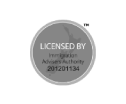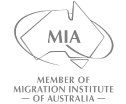Australia’s two largest cities present distinct financial landscapes for skilled professionals considering migration through the General Skilled Migration (GSM) program. While both offer robust job markets in sectors like healthcare, engineering, and IT professionals, their cost structures differ significantly in key areas that impact disposable income and quality of life.
Housing Market Dynamics
Rental Price Disparities
Sydney’s rental market commands premiums across all property types compared to Melbourne, with central business district (CBD) apartments demonstrating the sharpest contrasts:
| Accommodation Type | Sydney (AUD/month) | Melbourne (AUD/month) | Price Difference |
|---|---|---|---|
| 1-Bed CBD Apartment | 3,283 | 2,240 | +46.5% |
| 3-Bed Suburban Apartment | 3,874 | 2,702 | +43.4% |
This rental gap extends to popular residential areas—Surry Hills (Sydney) units lease for 25-40% more than equivalent properties in Fitzroy (Melbourne). Migrants should note that Sydney’s vacancy rates hover near historic lows (1.5% in Q1 2025), intensifying competition for quality rentals.
Purchase Price Considerations
While both cities experienced price corrections in 2024, Sydney maintains a median house price 38% higher than Melbourne ($1.2M vs $890K). However, Melbourne offers greater entry-level opportunities in emerging suburbs like Wyndham Vale and Craigieburn, where 3-bedroom homes start at $650k—55% below Sydney’s equivalent western suburban markets.
Essential Living Costs Breakdown
Groceries and Utilities
Monthly supermarket bills show marginal differences, though specific categories vary:
- Dairy Products: Milk costs 12% less in Melbourne ($2.40/L vs $2.70) [1]
- Utilities: Average electricity rates per kWh (Melbourne $0.28 vs Sydney $0.31) [4]
- Internet: Comparable 100Mbps plans at $79/month in both cities [2]
Dining costs diverge more substantially, with Sydney’s restaurant prices averaging 22% higher for mid-range meals [5].
Transportation Networks
Both cities feature extensive public transit systems, but Melbourne’s commuter savings accrue through:
- Myki vs Opal Cards: Weekly Zone 1+2 cap (Melbourne $46 vs Sydney $50)
- Fuel Prices: Regular unleaded averages $1.85/L in Melbourne vs $1.95 in Sydney [3]
- Toll Roads: Sydney’s comprehensive network adds $22/week for western suburbs commuters
Cycling infrastructure investments give Melbourne an edge, with 135km of protected bike lanes versus Sydney’s 87km—a key factor for professionals avoiding transport costs.
Disposable Income Realities for Migrants
The skilled migrant salary premium slightly favors Sydney (7-9% higher nominal wages), but Melbourne’s cost structure delivers superior purchasing power in critical categories:
After-housing disposable income comparison for AUD 120k earners
Healthcare workers and engineers can expect:
- 15-18% lower housing costs in Melbourne
- 9% higher grocery budget flexibility
- 4% overall living cost savings after accounting for transport and leisure
These margins enable earlier property investment—a median-income Melbourne household saves 6.7 years faster for a 20% home deposit than Sydney counterparts.
Strategic Migration Considerations
Visa-Specific Opportunities
Melbourne’s Designated Area Migration Agreement (DAMA) provides expanded occupations in regional tech hubs like Geelong, offering:
- Lower income thresholds (10% reduction)
- Extended stay pathways
- Housing cost savings of 32-40% compared to metro Sydney
Lifestyle Cost Arbitrage
Sydney excels for coastal lifestyle preferences, but Melbourne counters with:
- Cultural savings: Free major exhibitions vs Sydney’s $25-35 entry fees
- Education: Public school system ranked #1 nationally, reducing private school reliance
- Childcare: 14% lower weekly costs for full-time care [5]
Professionals should model scenario-based budgets accounting for:
- Family size
- Target savings rate
- Career progression timelines
Those prioritizing wealth acceleration may find Melbourne’s cost structure more conducive to long-term financial goals, while Sydney appeals to those valuing immediate income potential in specialized sectors.
A balanced approach might involve initial Sydney placements for career capital, transitioning to Melbourne for family formation phases. Both cities rank among the world’s most livable destinations, making personal priorities the ultimate determinant in this cost-of-living equation.










